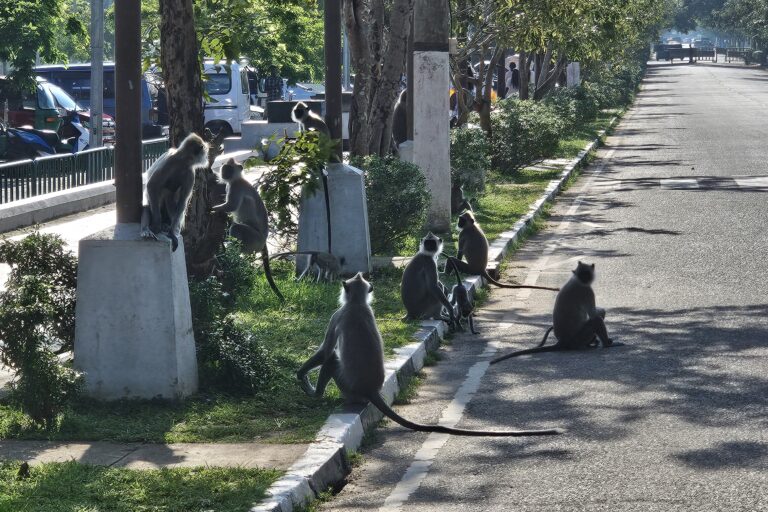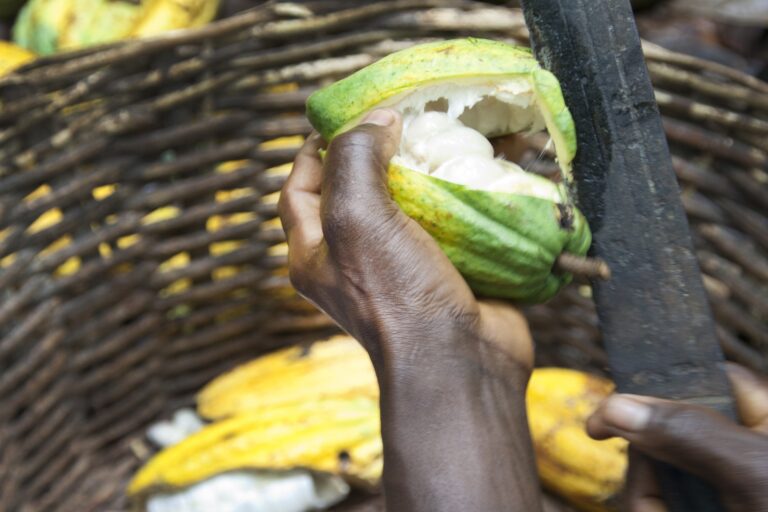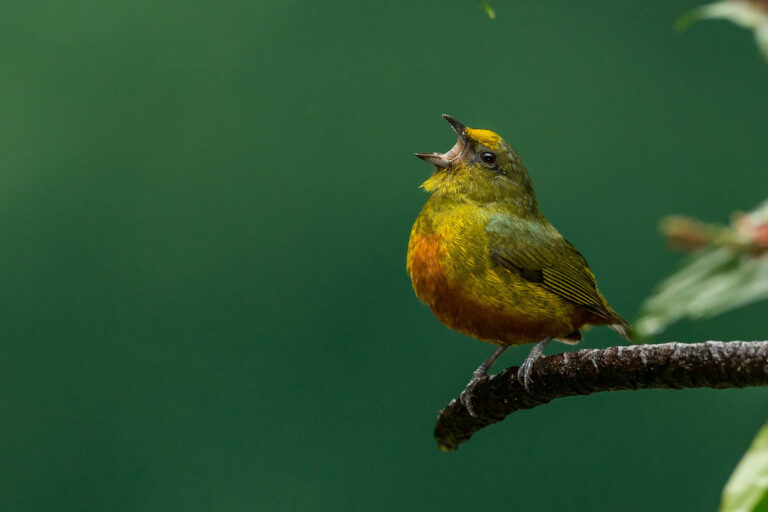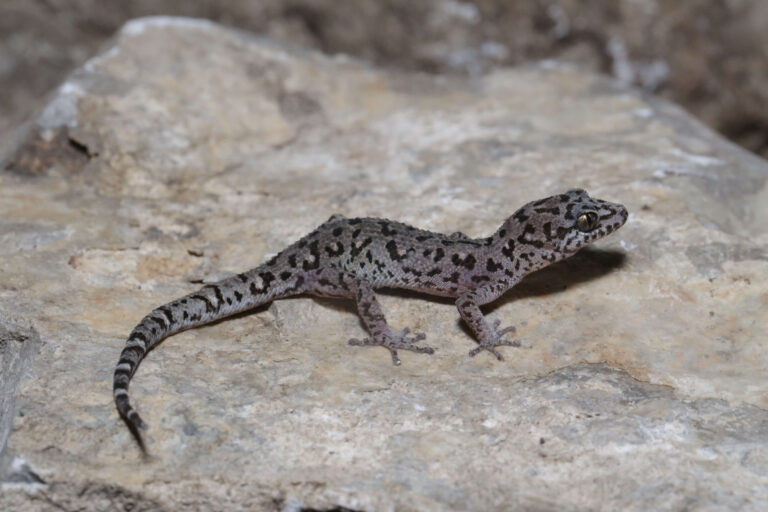- Facing sea level rise and food insecurity, 17 families from the Carteret Islands have relocated to nearby Bougainville, bringing hundreds of specimens of trees and plants, representing dozens of species, across a small stretch of ocean.
- They’ve planted more than 175,000 plants, breathing life into a forest on new lands donated by the Catholic Church.
- This “green migration” is helping them preserve their lifestyle and identity, sources say, echoing the journey of early Polynesian settlers who carried “canoe plants” as they sailed and settled across the Pacific.
- Scientists say green migrations could become part of climate relocation planning, but there also needs to be careful consideration of whether species can be moved and become unsustainably invasive.
BOUGAINVILLE, Papua New Guinea — The climate is changing, science shows. And according to some estimates, it could create anywhere between 200 million and 1.2 billion climate refugees by 2050. As people flee floods, failed harvests, dried rivers or destroyed homes, what becomes of the ecosystems they leave behind? Of the wildlife, trees and endemic species?
In the southwestern Pacific, people are bringing much of this biodiversity along with them. The residents of the Carteret Islands in Papua New Guinea are responding to climate threats by moving not only themselves to safer ground — but also the plants and trees that sustain their way of life. In their move, they have transplanted hundreds of specimens, representing dozens of species, across a small stretch of ocean.
“We’re not just leaving. We’re trying to bring a part of our islands with us,” says Maria Kamin, who left the Carteret Islands to relocate with other families in response to rising sea levels. They’ve moved to Bougainville, another island part of the country.
In their new home, this vegetation, combined with local flora, have helped establish a thriving forest of 175,000 trees and plants. During this “green migration,” residents tell Mongabay they hope to preserve not only the biodiversity of their native islands as conditions worsen, but also their culture and sense of place.
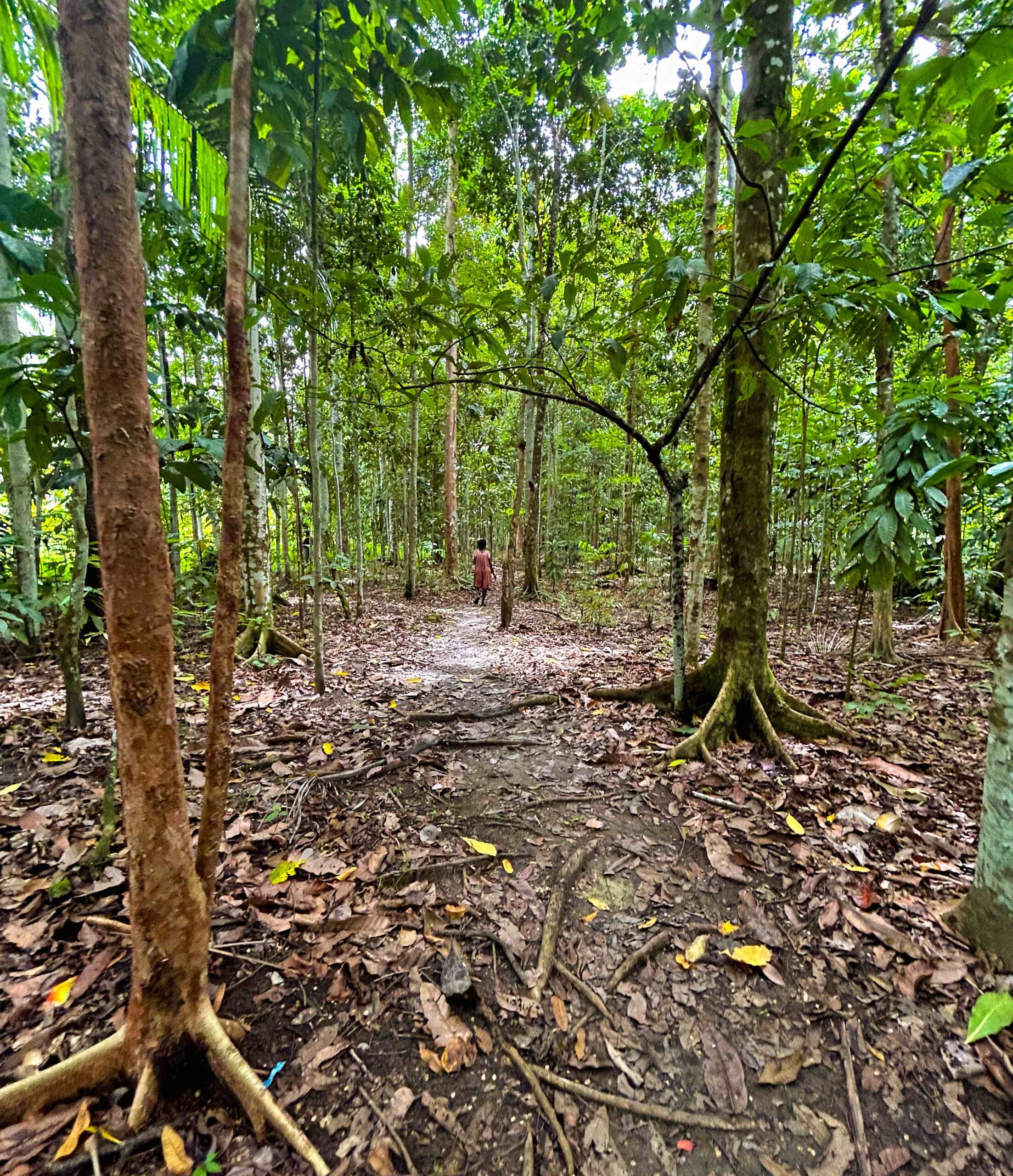
Carrying home forward
Few people ever want to leave their homeland.
But the Carteret Islanders came to the conclusion that moving part of their population — at least temporarily — was for the best. In 2005, they announced a relocation plan. It immediately attracted global attention, with media outlets labeling them the “world’s first climate change refugees.” Their home nation, Papua New Guinea, has grappled with climate change impacts for years and, in the face of what a minister called “empty promises and inaction” on the international stage, even decided not to attend this year’s U.N. climate conference, COP29.
According to Ursula Rakova, executive director of the organization Tulele Peisa (meaning “sailing the waves on our own”), a community organization coordinating the Carteret Islanders’ relocation process, the primary reason for their resettlement was the growing food shortages on the islands due to degradation of the environment.
The ocean’s quiet persistence wears away the atoll, which is only 1.2 meters (4 feet) above sea level.
“Rising tides and saltwater intrusion are gradually killing staple crops like banana trees, taro and breadfruit. Groundwater is too salty to drink, so we rely on water tanks, but rainfall patterns are changing,” she explains. “Offshore, marine resources are declining. Heat waves are killing many corals. Marine poaching by foreign vessels is also diminishing the fish stocks.”
Inevitably, as resources dwindle and the population grows, social tensions escalate. Yet, the decisive factor prompting relocation was witnessing children go to school hungry. “It’s seeing their future limited,” she reflects, “that pushes people to consider options once unthinkable.”


The Pacific is home to more than 30,000 islands, with almost a quarter of them less than 5 meters (16 feet) above sea level, putting them at risk from rising sea levels. According to the IPCC, these may reach up to 0.77 m (2.5 ft) by 2100, 1.4 m (4.6 ft) by 2150 and potentially 6.8 m (22 ft) by 2300. Alongside sea level rise, Pacific islands face threats from intensified cyclones, coral reef degradation, droughts, altered rainfall and health risks from vector-borne diseases, all of which heighten the likelihood of population relocation.
Many other Pacific communities are also actively working on adaptation or planned relocation to avoid forced displacement, said Carol Farbotko, an Australian Research Council Future Fellow at Griffith University. “Policies and frameworks, such as relocation guidelines in Fiji and the Solomon Islands, as well as the Pacific Regional Framework on Climate Mobility, are being developed to support this effort,” she says.
In 2009, after securing sufficient funding, Tulele Peisa began relocating Carteret Island families to Bougainville’s main island on lands donated by the region’s Catholic Church. This larger, more resilient landmass, lying 86 kilometers (52 miles) to the southeast, offered a place to rebuild and take root anew. To date, 17 families have resettled. Rakova estimates that an additional 14 million kina (about $3.5 million) is needed to relocate 350 more families — approximately 1,700 people, or half the population. She says she hopes they accomplish this by 2030 and will bring more trees and plants with them.
Of the resettled families, 10 (totaling 83 individuals) now live in a newly established village called Woroav. Right next to the village, they breathed life into a forest, creating a vibrant ecosystem over the past 15 years.
“The area used to be swampy before,” Rakova says, “but the trees have soaked up the water, making the land drier, and now the land has many trees and plants.” Together, they’ve planted 175,000 trees and plants just southeast of their habitations, including many species brought over from the Carteret Islands.

Transporting the greenery to Bougainville was no simple task.
The two groups of islands are separated by a stretch of ocean, and each speedboat trip spanned three hours and cost 200 kina (about $50) per person, a considerable expense in the region, even with financial support from churches in Germany, the U.S. and Australia. Still, they managed to carry across the water seedlings of essential plants like breadfruit (Artocarpus altilis), giant swamp taro (Cyrtosperma merkusii) and medicinal herbs. They even brought coconuts (Cocos nucifera), sprouting them at the relocation site before replanting. Today these towering trees stand tall above their homes. A whole new generation of Carteret Island flora now flourishes alongside the community.
Sailing with ‘canoe plants’
Many species transported from the Carteret Islands already grew in Bougainville, like breadfruit, taro and coconut trees. Yet, the families chose to transplant their own varieties, cherished for their unique qualities. The Carteret breadfruit, for instance, is seedless, unlike the seeded kinds common in Bougainville. Their coconuts are sweeter, and the taro carries a distinct taste and aroma. However, not all species are the same between the islands. The islanders could not find some species, like their medicinal plants, in Bougainville.
For the island’s Tuluun (“Ocean People”), bringing their vegetation along offered a sense of continuity, an assurance that these familiar foods, proven over generations, would meet their needs and provide security against the unknown qualities of local varieties, families tell Mongabay.
“It is only natural for the Carteret islanders to want to carry essential plants and trees with them, says Christian Giardina, director of the Institute of Pacific Islands Forestry. “This has been the story of human migration across the Pacific and the origin of the term ‘canoe plants.’”
For instance, many crops from across Polynesia, such as taro, banana, sweet potato, breadfruit, sugarcane and candlenut, arrived to Hawaiian Islands from other Polynesian islands on early voyaging canoes and have persisted for at least a millennium.


“The early Polynesian voyagers carrying the plants possessed sophisticated agronomic skill sets, selectively breeding them to withstand different conditions and to develop distinct flavors, Giardina says. Through both natural evolution and intentional cultivation, these species have radiated into hundreds of varieties, shaping diets, healing practices and ecosystems along the way.
Farbotko, who has researched climate mobilities and Indigenous solutions in the Pacific, says she believes “green migrations” could become part of relocation planning, allowing the community to identify valuable and at-risk species that could be moved as part of the overall relocation planning process.
However, there would need to be consideration of whether the species can or should be moved to the new site, using local and traditional knowledge, values from both sites as well as science, she explains.
Replicating this approach across diverse ecosystems has limitations, and sources say ecological compatibility must be carefully considered to avoid introducing unsustainably invasive species. This risk is generally lower, though not negligible, in regions geographically close to one another.
Also, Giardina says, “communities across the Pacific are still connected, often over generations, to a wide diversity of plants valued for various reasons.”
Some provide essential nutrition (breadfruit) while others serve medicinal purposes in traditional healing practices (ti, Cordyline fruticosa). Certain plants are prized for their timber (kamani, Calophyllum inophyllum), used in construction, crafts and home goods. Others fulfill practical functions, such as enriching the soil and preventing erosion (candlenut, Aleurites moluccanus).
“Nearly all canoe plants — those transported by Polynesian voyagers to new locations, including these four species — serve multiple functions,” he says.

As plants evolved differently across the Pacific region over centuries, the Carteret varieties may not retain their distinctive qualities indefinitely in Bougainville’s environment, Giardina says. Plants are remarkably adaptable, and their chemistry, growth patterns and even flavor change in response to new surroundings, he tells Mongabay.
Seeds of belonging
For these islanders, bringing their vegetation to Bougainville is not just about saving plants. It is an act of preserving place, memory and self in a new context, residents say.
To understand this dimension better, environmental psychologists have a concept called ‘‘place attachment,” the emotional bonding that occurs between individuals and their environment. For the Carteret Islanders, flora embodies a link to their homeland, both spatially and socially, as it shapes the physical landscape of the atoll and is woven into rituals and ceremonies that span generations. It contributes to this sense of place.
Place attachment isn’t just sentimental; it plays a role in human well-being and likely exists because of its psychological functions, states a study published in the Journal of Environmental Psychology. Research suggests that strong bonds to places can make people feel safer, aid in stress recovery and provide a sense of continuity.
Although the relocation plan is deemed temporary, the islanders may one day indeed never be able to return to their homeland. But Rakova remains hopeful.
“We want to protect our species from dying out so when we start doing some form of reclamation, we can bring back the seedlings to the island,” she says.

Banner image: Carteret islanders on a canoe. Image credit: Friends of the Earth.
Not merely ‘exploration’: PNG deep-sea mining riles critics & surprises officials
Citation:
Scannell, L., & Gifford, R. (2010). Defining place attachment: A tripartite organizing framework. Journal of Environmental Psychology, 30(1), 1-10. doi:10.1016/j.jenvp.2009.09.006
FEEDBACK: Use this form to send a message to the author of this post. If you want to post a public comment, you can do that at the bottom of the page.







